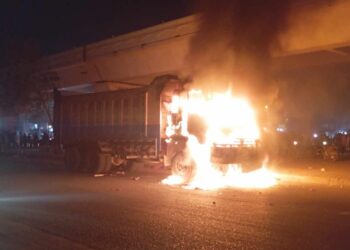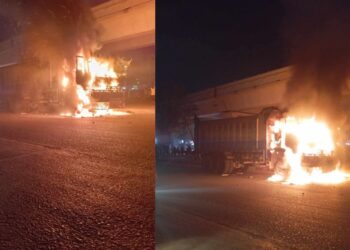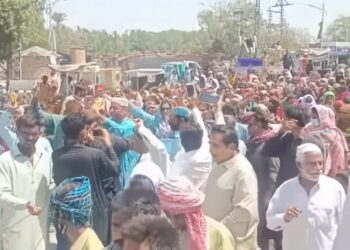SHIKARPUR, Dec 4: Thousands of people in Shikarpur district are still struggling to cope with the aftermath of the floods as large swaths of land, at least in the seven union councils of the district, are under rainwater.
The subhuman conditions in these villages have exposed large populations to all sorts of disease, particularly skin and water-borne infections, while the government is unmoved by their plight, a visit to the flood-affected villages showed on Tuesday.
People in these villages complained that the government was making no effort to pump out the rainwater and provide them with basic necessities of life.
“We hadn’t recovered from the 2010 floods when we were hit yet again by another flood this year. But our unending miseries haven’t elicited a due government response so far.
“The government has taken no measures to pump out the water. Most of us only got a paltry cash of Rs20,000 on account of Watan Card and a ration bag a family, though the government had promised to give Rs100,000 to each flood-affected family in 2010,” said Mohammad Sajan, the pesh-imam of a mosque of Mohammad Saleh Pahore village of Rahimabad union council, Khanpur taluka.
The village had no facilities for clean drinking water and sanitation. One could see the school, the only educational facility in the village, surrounded by rainwater while houses bore marks of the devastation that had struck the village a few months ago. Some of the houses were partially damaged while others were made too fragile to live in.
“The village school has been closed since 2010 and is being used by flood-affected families. All schools in the union council have been closed except the one functioning in the main union council,” the pesh-imam said.
Sharing their woes, residents of Yousuf Bhatti, Mohammad Pohore and Murad Pohore villages told Dawn that the floods had rendered them jobless as the entire cultivated area in the union council had been destroyed.
“The population of the (Rahimabad) union council consisting of 45 villages is between 45,000 and 50,000. Water is standing in most villages and people are forced to travel long distances for jobs,” Khan Mohammad, a social worker, said, adding that about 10,000 acres were under water.
Local influential persons were a big hurdle in diverting water away as they were not ready to provide a natural flow to the water by allowing the government to pump out the water through their land, explained some villagers.
The other union councils still under water are: Himayun, Jagan, Janwar, Nodra, Zerkhel and Bhambiro.
According to the Provincial Disaster Management Authority data, this year’s monsoon floods killed over 283 people and rendered more than three million homeless in Sindh, making it the worst-hit province.
About 1,795 villages and 251,279 people were affected in Shikarpur with damage to 42,068 houses. The catastrophe claimed lives of 52 people, including 26 children, while 259 persons were injured. One hundred cattle heads also perished along with the cultivated 88,465 hectares.
When contacted, additional deputy commissioner of Shikarpur Akmal Khattak said the government had distributed 80,000 ration bags, 40,000 blankets and 22,000 tents in the flood-affected areas of the district. The worst affected seven union councils were the government’s top priority.
“The government has the assistance of non-government organisations as well. For instance, the World Food Programme is looking after the food needs of the flood victims whereas a United Nations agency is looking after shelter needs.”
Ninety-five camps for flood victims were set up for two weeks where 34,000 internally displaced persons stayed. “More than 300 schools and 16 rural health centres/basic health units have been damaged and they would need time to become functional,” he added.
Answering a question about de-watering the affected areas, he said the government had tried but there were areas where officials were unable to find a place to divert water to without provoking protest by the landowners.
The distribution of cash was also part of the government plan that to an extent would address the flood victims’ concerns, he said.

















